In the spring of 2015, tension and unrest erupted in Baltimore, bringing the issues of racism and inequality to the center of national media attention. Since then, these disparities have only become more prevalent as the voices of unrest grow louder – including in Ferguson, MO, Charleston, SC, and Charlottesville, VA to name only a few. These events have been a call to action for many, leaving many to consider how they can bring about change in our social system. While such issues may at first seem to be beyond the reach of design professionals, Richard Jones, President of Baltimore-based design firm Mahan Rykiel Associates (MRA), believes that it is necessary for the profession to address inequality so that we may better meet the needs of those we serve. During his presentation at Land8x8 Lightning Talks, Richard shared how his firm is exploring the intersection of landscape architecture and racial inequality and a design firm’s role in addressing social injustice.
In the field of landscape architecture, it is critical to hear from a diversity of voices throughout the design process to ensure a successful project – one that meets the needs of all community members. However, the demographics of our nation is not reflected in the profession, where African Americans and Latin Americans together account for 17 percent of graduating landscape architecture students. In a field intended to create spaces that bring people together, new perspective is needed to ensure that landscape architecture reflects the communities it serves. As Richard states, “The future of our profession in a world that looks like this one is hinged on developing diversity in our practice which more accurately represents the diversity in our country.” MRA is working to address the lack of diversity in the profession and provide just and equitable spaces to underserved communities by focusing on inequality in schools.

To tackle the issues of social and environmental inequality, Mahan Rykiel created their Social Impact Studio. As Richard explains, “The studio focuses primarily on collaborative action to give voice to the underserved so that they might be partners and leaders in rebuilding their neighborhoods and celebrating the richness of their culture and history.” The first project launched out of this studio, Project Birdland (2017), explored how they could address social injustice in their community, while operating within the bounds of the profession. While working on the Anthem House, a mixed-use development located within the Locust Point neighborhood of Baltimore, Richard found the work-around he had been looking for through the Chesapeake Bay Critical Area “fee-in-lieu” mitigation payments. Because the team couldn’t replace all of the trees that were removed during the development, they were facing to mitigate for trees and vegetation lost during the development process. By partnering with the City of Baltimore and Anthem House ownership, Mahan Rykiel was able to re-direct these fees as seed money for a project that benefits both the local community and environment.
The project started with the idea of taking the trees to a nearby underserved school, Francis Scott Key Elementary/Middle School (FSK), but after meeting with the school principal, the scope expanded to the creation of a classroom curriculum, the design and fabrication of birdhouses, and the creation of an outdoor bird habitat and learning lab – interweaving the project with design-based environmental education. The project addresses the shortfalls in STEM-based learning in the city school system and provides an opportunity for students at the school to gain knowledge in ecology and foster an appreciation for the natural environment.
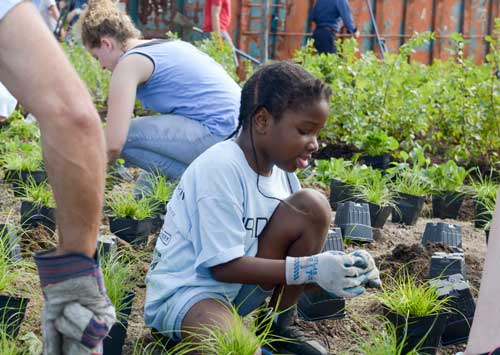
The habitat design at FSK re-envisioned the school’s entrance to be an outdoor educational and learning space, integrating an array of landscape elements that tie into STEM curriculum objectives. The outdoor bird habitat was planted with over 3,600 native plants and provides students with an opportunity to learn about nature (in a city where students may not be exposed) and be excited to go to school. In conjunction with the habitat design, the school adjusted their curriculum to include lessons on habitat and ecology. Learning directly from urban ecologists and designers, the students were challenged to study the impacts of urbanization and habitat fragmentation on urban song birds. In addition, sixth- and eighth-graders took part in a competition to design birdhouses out of Popsicle sticks, with two winning prototypes used as inspiration for the creation of wood and steel birdhouses designed by Gutierrez Studios and placed within the habitat.
What would have been a typical tree mitigation requirement, became an opportunity for Richard’s team to address inequity in their own city and introduce concepts of design and natural environments to an underserved population. Not only did the project improve the quality of the school’s campus, it more importantly took a step towards addressing issues of inequality in the environment, education systems, and the profession. A catalyst for new partnerships between developers, educators, environmental designers, and neighborhood communities, Project Birdland shows us how landscape architects can facilitate the change they wish to see within our own field and in society at large.
So, the culmination of the effort is a project that builds community, extends curricula, educates students, and most importantly, instills within the children at FSK the belief that they can dream beyond the limits of their current circumstance – to see within themselves the potential to be a scientist, a designer, or a landscape architect, and, maybe most importantly, to see tangible proof that they can positively affect the environment around them. – Richard Jones
—
This video was filmed on September 28, 2017 at ASLA’s Center for Landscape Architecture in Washington, DC as part of the Land8x8 Lightning Talks sponsored by Anova Furnishings.
Published in Blog, Cover Story, Featured




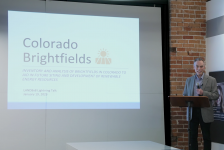
![Deep Collaboration: Ecology, Research, Design [Video]](https://land8.com/wp-content/uploads/2018/05/stephanie-carlisle-224x150.png)
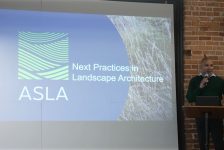
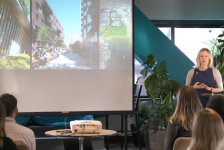
![Rising from the Rubble: 1500 Design Challenges for the Emerging Future [Video]](https://land8.com/wp-content/uploads/2017/11/JAMESON-COVER-224x150.png)
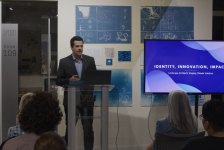
![Fill for Habitat [Video]](https://land8.com/wp-content/uploads/2022/07/land8-cover-224x150.png)
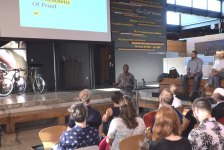
![10 Billion Mouths [Video]](https://land8.com/wp-content/uploads/2018/06/michael-grove-land8x8-224x150.png)